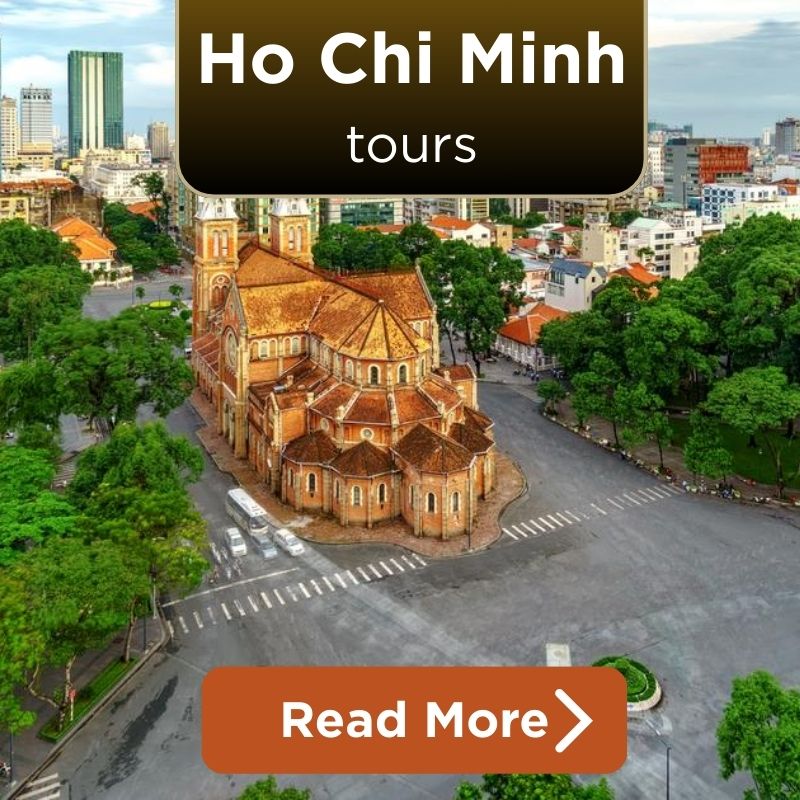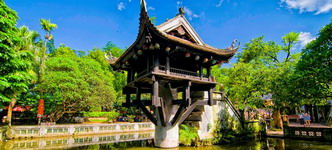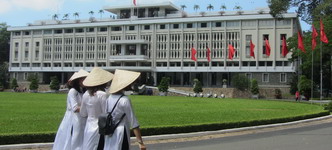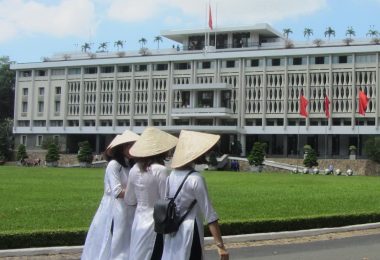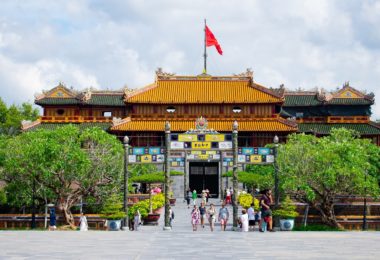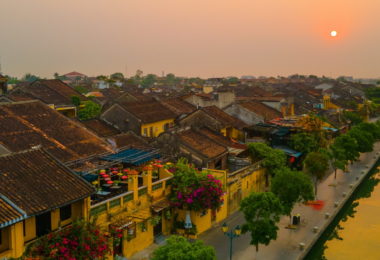The Fascinating History of Non La – traditional hat Vietnam
Ancient Origins: Dong Son Culture (3,000 Years Ago)
Our history starts over 3,000 years ago, in the centre of ancient Dong Son Culture in Vietnam. It was here, upon the Ngoc Lu bronze drums, that the first images of the traditional hat Vietnam were found, testifying to its rich history in traditional Vietnamese culture. The ancient carvings illustrate a period in which Vietnamese folk donned conical hats made from palm leaves and bamboo, wearing them to ward off sunlight and rain – a practice that has survived to see in millennia.
There’s history, of course, but there’s also a legend! Legend speaks of a time of constant storms and catastrophic floods, with a Rain-Shielding Goddess descending from heaven. Wearing a great Vietnamese palm leaf headgear, which screened her people from the pounding rain, her divine intervention not only preserved them but also educated them in the art of farming. The villagers, as a tribute to her, reenacted her traditional hat Vietnam, giving rise to the renowned Non la we have today.
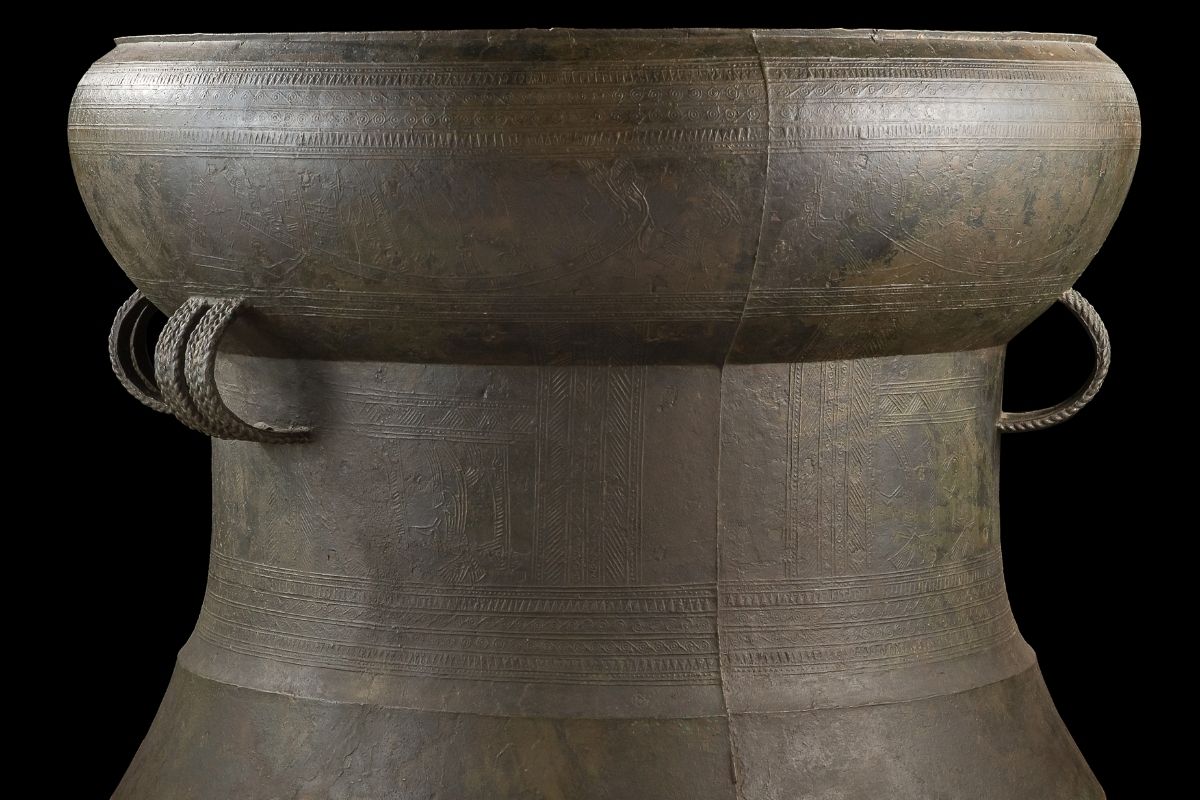
Ngoc Lu bronze drums (Source: baotanglichsu)
Evolution Through Dynasties – From Feudal Times to Hue’s Artistic Era
The traditional hat Vietnam changed as history in Vietnam progressed, eventually becoming a symbol of social class and national identity.
- Feudal Period: This period saw the traditional hat Vietnam conical hat as a status symbol. Nobility sported highly ornate conical hats, while farmers and rural dwellers sported more basic ones designed for everyday use.
- Hue Dynasty – The Rise of Non Bai Tho (Poetry Hat): Within Hue’s city of verse, traditional hat Vietnam art peaked. The Non Bai Tho, or Poetry Hat, was a masterpiece – a dainty Vietnamese palm-leaf hat adorned with concealed poems, only to be revealed after light passage through. It symbolized elegance, with which it was ideally matched against the ethereal Vietnamese Ao Dai, a testament to authentic traditional Vietnamese heritage.
Cultural Significance of Non La – Vietnam’s Traditional Hat
The time-honored traditional hat Vietnam, or the Vietnamese palm leaf hat, is more than a utilitarian accessory – it’s an icon of Vietnamese identity, signifying the resourcefulness and elegance of the Vietnamese people. Constructed of natural palm leaves, the conical Vietnamese hat has been a steadfast companion to farmers, a protector from the rain and the blazing sun, yet a presence also upon fashionable females wearing Ao Dai Vietnam. Whether seen in rural or urban streets, this traditional Vietnamese culture signifies the enduring values of ancient Vietnamese society, in which simplicity and beauty walk together.
In addition to its functionality, the traditional hat Vietnam is a work of art revered in Vietnamese literature as well as in the arts. It stands for modesty and elegance in poetry, induces love songs in music, and depicts elegance in paintings of Vietnamese women in Ao Dai, giving rise to an image of timelessness. It’s more than a trinket, a living embodiment of a country’s artistic soul as well as cultural pride.
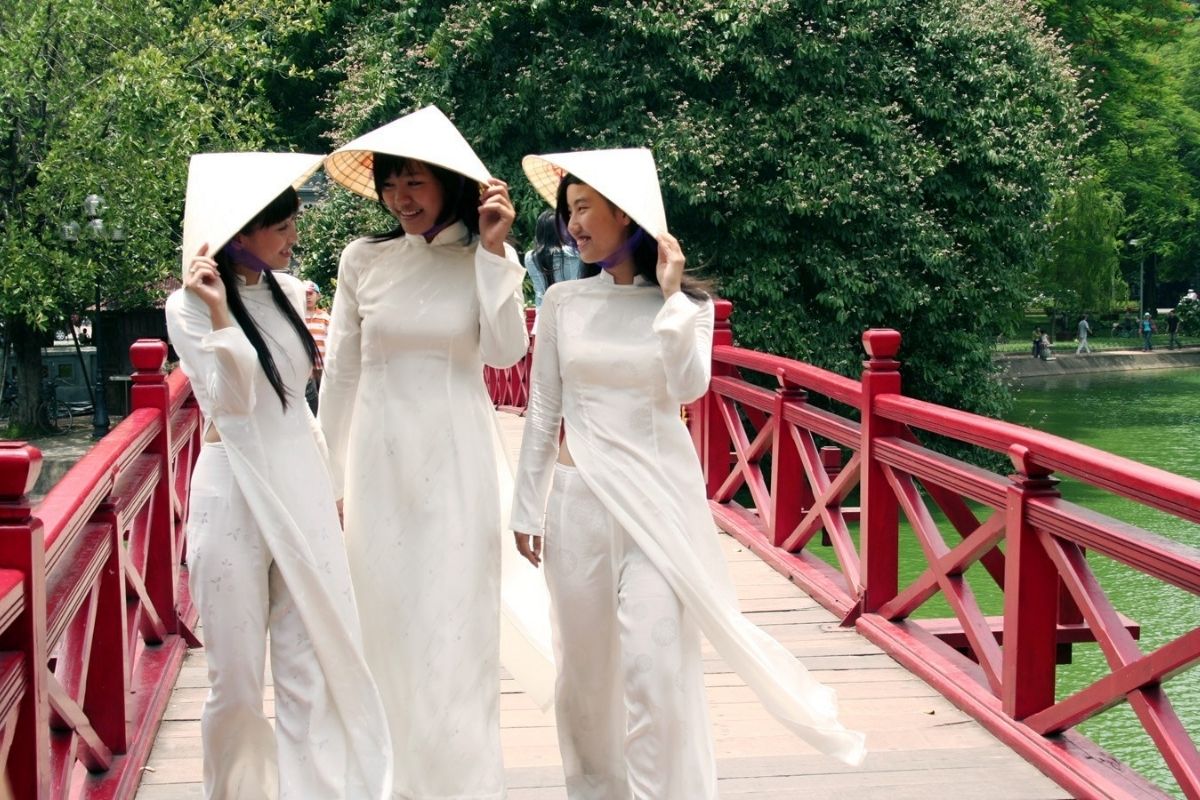
Traditional hat Vietnam (Source: nonlaviet)
Types of Non La: The Diverse Charm of Vietnam’s Traditional Hat
Traditional Non la – The Classic Conical Hat
- Description: The most recognizable and prevalent style of traditional hat Vietnam, this classic conical hat is donned by farmers, vendors, and ordinary Vietnamese folk. It is constructed from bamboo and palm leaves, it’s light, airy, and perfect for warding off rain or sunlight.
- Where to Buy:
- Chuong Village (Thanh Oai, Hanoi): The most renowned village for traditional Non la in northern Vietnam. Here, you can see artisans making each hat by hand.
- Address: Chuong Village, Thanh Oai District, Hanoi.
- Price: From 10,000 – 50,000 VND per hat, depending on size and quality.
- Traditional Markets in Hanoi: Dong Xuan Market, Hom Market, and Night Market in the Old Quarter.
- Price: 20,000 – 100,000 VND.
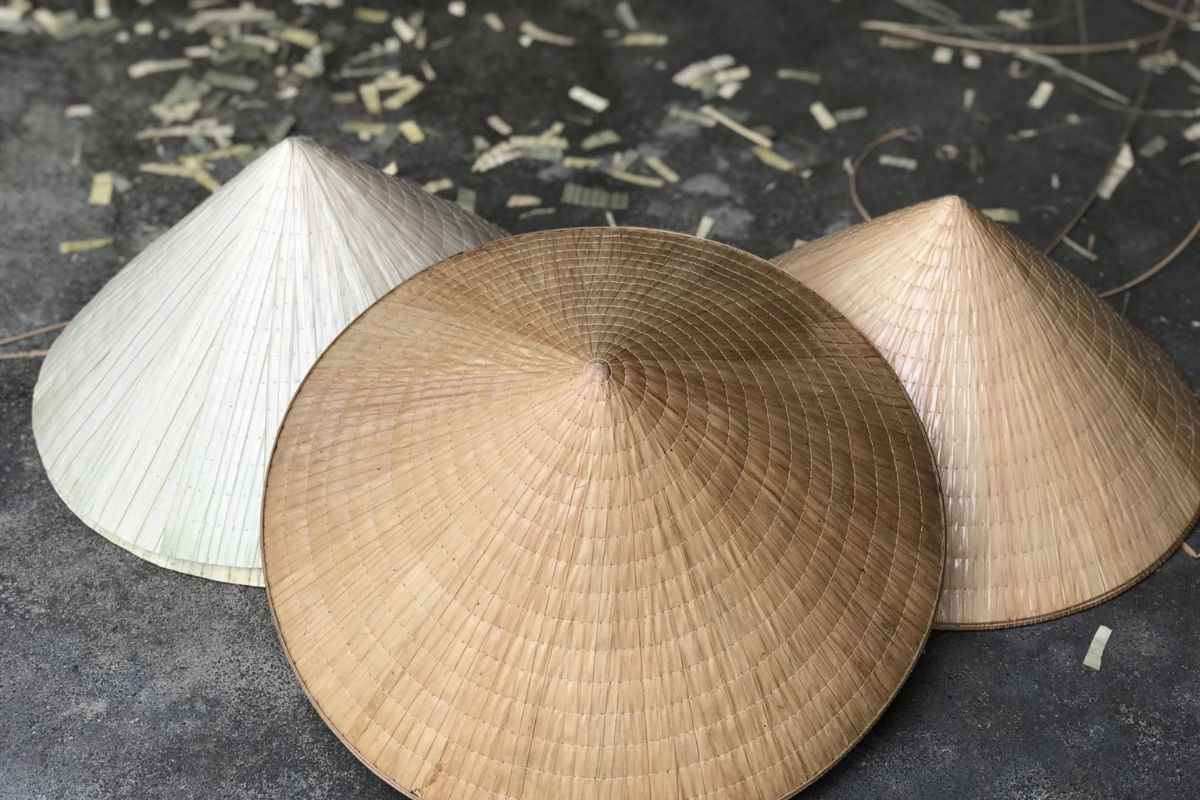
Traditional Non la (Source: laodong)
Non Quai Thao (Flat-Brimmed Hat) – A Northern Treasure
- Description: Symbol of elegance in Northern Vietnam, most especially in the Red River Delta, Non Quai Thao stands out for its broad, flat brim as well as its lengthy silk strands. It’s a traditional cap for women to wear during Quan Ho folk performances, representing cultural heritage from the region.
- Where to Buy:
- Bac Ninh Province (Red River Delta): The heart of Quan Ho folk singing, where artisans create Non Quai Thao.
- Address: Dinh Bang Village, Tu Son District, Bac Ninh.
- Price: From 100,000 – 300,000 VND per hat, depending on the quality of the silk ribbons.
- Old Quarter of Hanoi: Specialty souvenir shops and craft boutiques.
- Price: 150,000 – 400,000 VND.
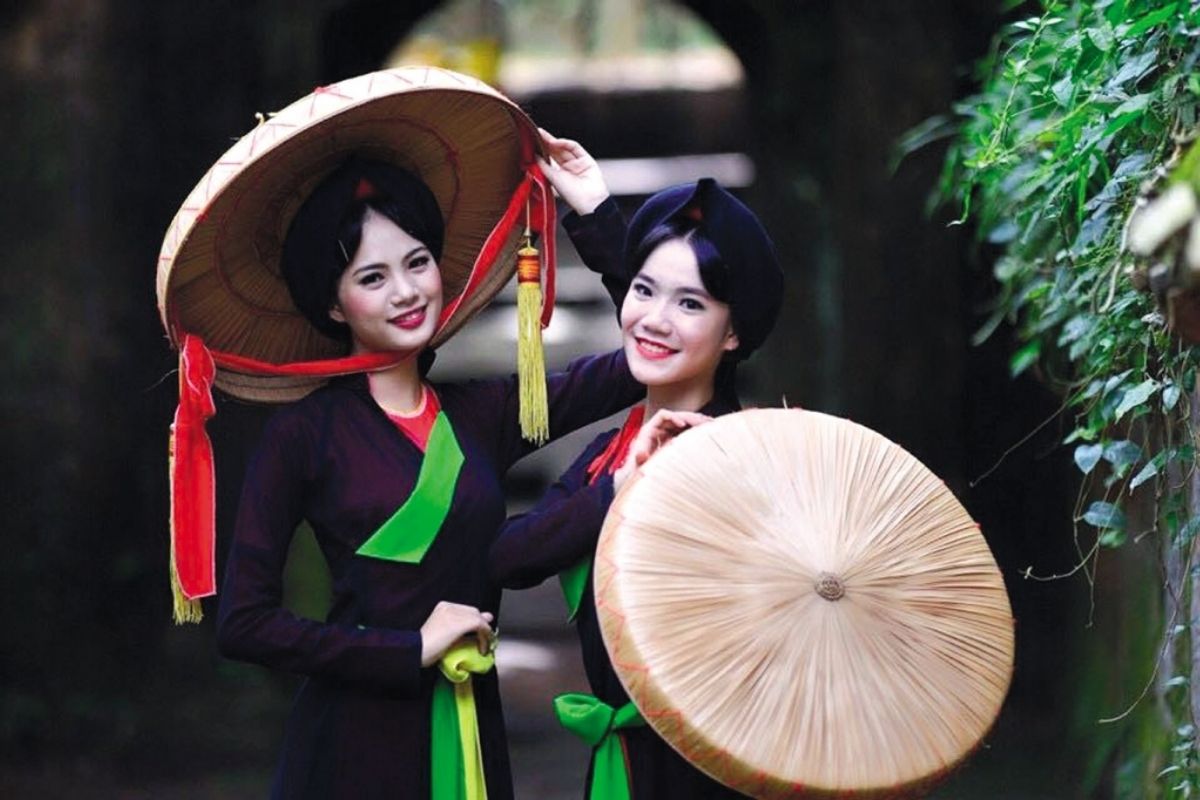
Non Quai Thao (Source: baobacninh)
Non Go Gang (Sturdy Horse Hat) – The Strength of Binh Dinh
- Description: The Non Go Gang, renowned for its resilience, is a thick, heavy conical hat originally used by soldiers and farmers in Binh Dinh. It is constructed from strong palm leaves and supported by bamboo, making it a symbol of resistance
- Where to Buy:
- Phu Gia Village (Cat Tuong, Phu Cat District, Binh Dinh): The village is most renowned for making Non Go Gang, where you can watch the entire process of making such a robust hat.
- Address: Phu Gia Village, Cat Tuong, Phu Cat District, Binh Dinh.
- Price: 50,000 – 150,000 VND per hat, depending on size and durability.
- Quy Nhon City (Binh Dinh): Souvenir shops near the city’s beach areas.
- Price: 80,000 – 200,000 VND.

Non Go Gang (Source: aboutquynhon)
Non Bai Tho (Poetry Hat) – The Poetic Soul of Hue
- Description: This cultural marvel of Hue, Non Bai Tho, is a dainty conical headgear with concealed poems, paintings, or symbols of culture embedded in its layers, which can only be seen upon holding it up to light. It’s a fine representation of Vietnamese art and looks great with a traditional Ao Dai from Vietnam.
- Where to Buy:
- Phu Cam Village (Hue): The birthplace of the Non Bai Tho, where you can find high-quality poetry hats directly from artisans.
- Address: Phu Cam Village, Phu Vang District, Hue.
- Price: 150,000 – 500,000 VND per hat, depending on the complexity of the poems and designs.
- Dong Ba Market (Hue): A bustling traditional market offering a variety of conical hats, including the famous Poetry Hat.
- Price: 200,000 – 600,000 VND.
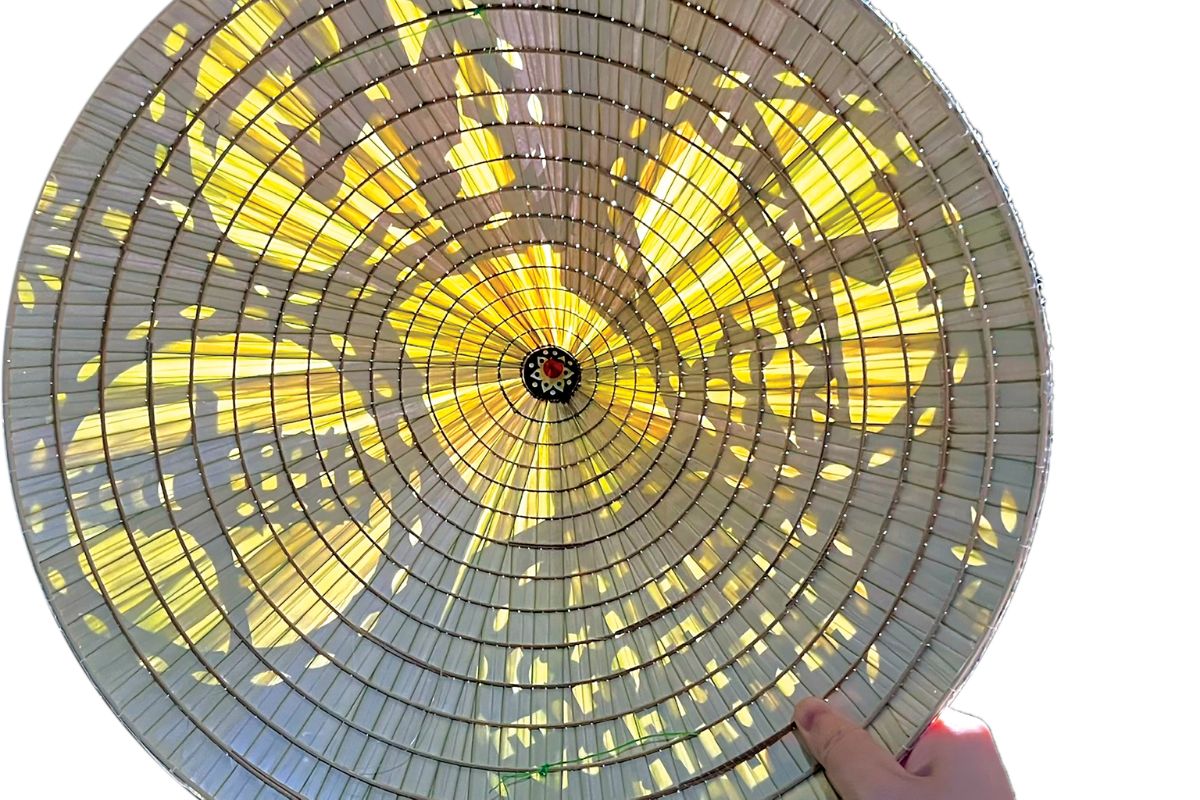
Non Bai Tho (Source: nld)
Non la Sen (Lotus Leaf Hat) – The Purity of Vietnamese Culture
- Description: The traditional conical hat with a modern touch, the Non la Sen uses lotus leaves over palm leaves to create a piece of elegance that highlights Vietnamese purity and beauty, serving as a fashionable decoration or a thoughtful gift.
- Where to Buy:
- Linh Phuoc Pagoda Craft Shop (Da Lat): Known for its unique and artistic Non la Sen.
- Address: Linh Phuoc Pagoda, Trai Mat, Da Lat.
- Price: 200,000 – 700,000 VND per hat, depending on the design and size.
- Hoi An Old Town (Quang Nam): Boutique souvenir shops specializing in handcrafted accessories.
- Price: 250,000 – 800,000 VND.
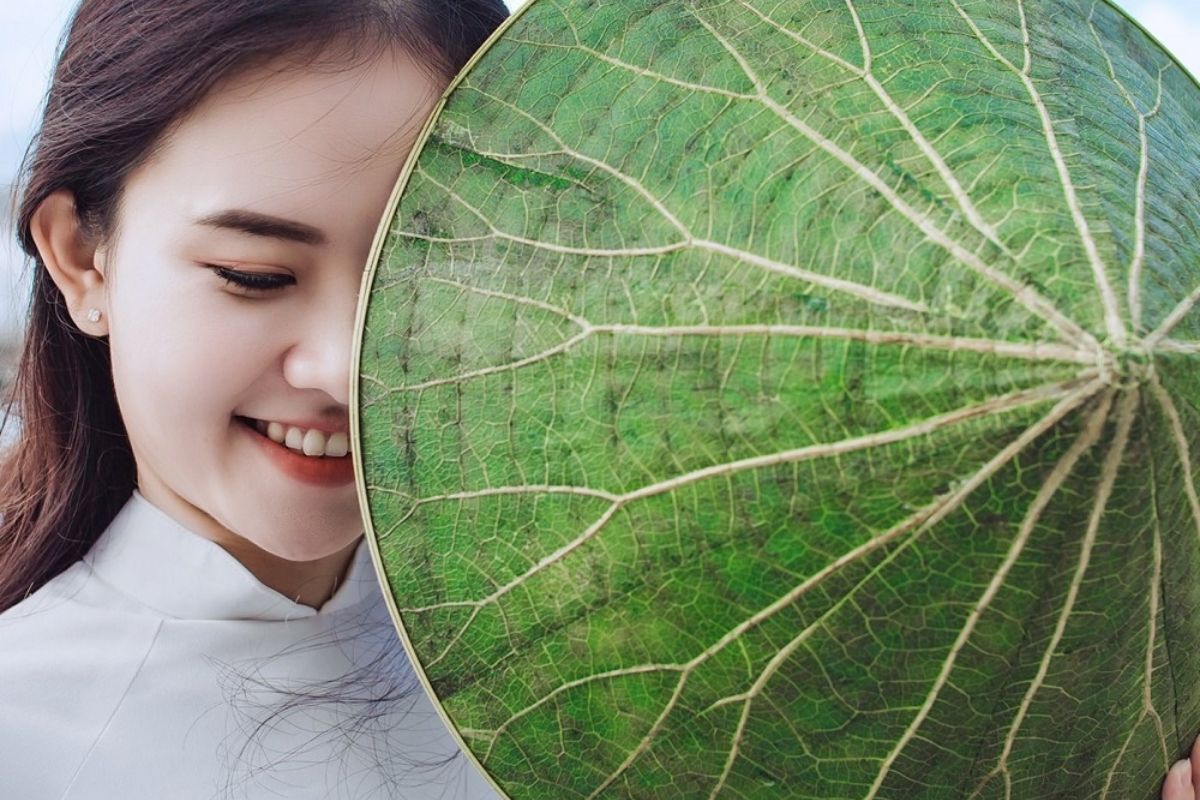
Non la Sen (Source: khamphahue)
The Cultural Role of traditional hat Vietnam Today: Tradition Meets Modern Style
Non la in Festivals and Ceremonies with traditional hat Vietnam
Traditional hat Vietnam, a symbol of cultural pride, is used on special occasions. Women wear Non la in traditional attire during Tet (Lunar New Year), exuding elegance and convention. Non Bai Tho (Poetry Hat) in Hue stands out among traditional performances, as concealed poems in the hat come to light. At weddings, Non la represents blessings bestowed upon the bride.
Modern Adaptations in Fashion and Art
The traditional hat Vietnam transcends its original purpose to evolve into a fashion symbol. It is featured in fashion runways, where it’s elevated to high-fashion headpieces adorned with pearls, as well as eyelets with intricate stitches. Artists have converted the Vietnamese palm-leaf hat to a canvas, which they use for paintings as well as digital art to make it a representation of expression.
The Perfect Souvenir for Tourists
For travelers, a traditional hat Vietnam represents cultural beauty, which can be a must-buy gift.
- Non Bai Tho (Poetry Hat) from Hue: 150,000 – 500,000 VND (Phu Cam Village, Hue).
- Non la Sen (Lotus Leaf Hat) from Da Lat: 200,000 – 700,000 VND (Linh Phuoc Pagoda, Da Lat).
- Traditional Non la from Chuong Village, Hanoi: 10,000 – 50,000 VND (Chuong Village, Thanh Oai, Hanoi).
Conclusion
The traditional hat Vietnam, or the Vietnamese palm leaf hat, is more than a headgear – it’s a work of Vietnamese art. Crafted from selected palm leaves and bamboo, each hat expresses Vietnamese artisans’ skill and patience. Whether it’s Hue’s poetic Non Bai Tho, Binh Dinh’s strong Non Go Gang, or Da Lat’s refined Non la Sen, these hats represent living embodiments of traditional Vietnamese culture. Not only functional for protection from rain and sun, but they also convey heritage as well as art. Carry a traditional hat Vietnam as a piece of history, art, and culture as you travel through Vietnam.

















